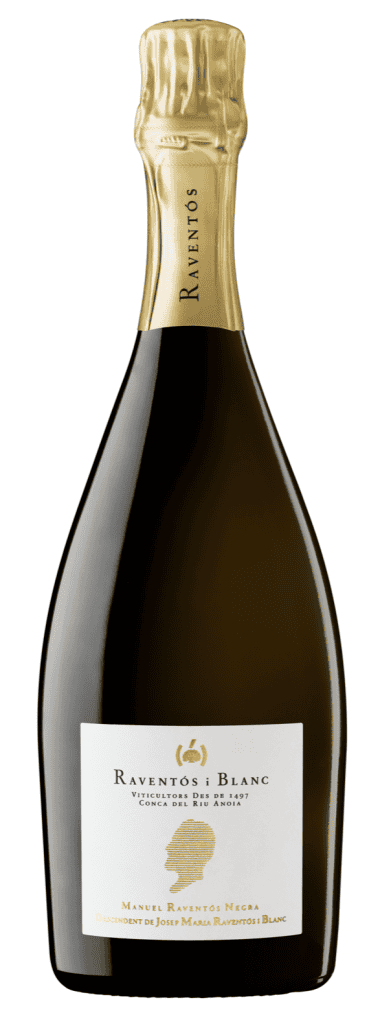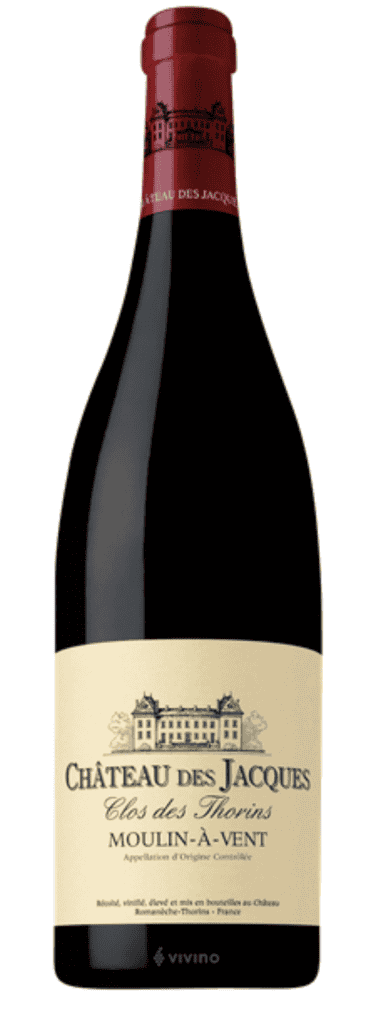Hello and welcome to my weekly dig through the pile of wine samples that show up asking to be tasted. I’m pleased to bring you the latest installment of Vinography Unboxed, where I highlight some of the better bottles that have crossed my doorstep recently.
This week included one of Spain’s most regal sparkling wines, the long-aged Manuel Raventos Negra blend of the traditional Cava grape of Xarel·lo and the much less common indigenous red grape known as Sumoll. Negra’s family business, Raventos i Blanc, decided some time ago that they were going to step outside of the Cava appellation, as they desired to make site-specific wines in ways that were either not allowed for wines labeled Cava, or not appreciated by traditional Cava consumers, folks looking for cheap and cheerful sparkling wines.
The Manuel Raventos Negra is aged for six years on the lees before disgorging and has many of the qualities of well-aged Champagne. It’s not cheap, but if you’re interested in the apogee of what Cava could be if it were allowed to be, this would be it.
Before we take a detour to France, let’s pause for a moment and appreciate someone who has been making wine since 2007, but who most people have never heard of. Winemaker Carlos Caruncho grew up in Cuba where he was born, attended university in Russia, and defected from Cuba at the age of 27. After living in Canada for a year, he crossed the border into America and finally received refugee status in 1992.
That same year he began working occasionally with winemaker Gideon Beinstock at Renaissance Vineyards, something he continue to do for the next couple of years. After a stint abroad (tasting rather than Making wine) Caruncho returned to California and took over a 45-year-old abandoned vineyard in the Sierra Foothills, coaxing it back to some semblance of life through organic dry farming under the name Arquils Wines (Carlos’ given name, and the Spanish rendition of Achilles).
Caruncho makes his wines with minimal intervention, using natural yeasts, no racking, neutral oak, no filtering, and no added sulfites, using 50% whole cluster for the white wines. The Sauvignon Blanc Caruncho sent me is one of the more exciting examples I’ve tasted from California in some time. It’s full of electricity and has a wonderful personality. Find some if you can. This will be a producer to watch.
This week also included the last of the really quite lovely Moulin-à-Vent wines that have been sent to me recently, and I am left with a very important reminder: none of us are drinking enough Gamay. I say this not just based on these wines that were sent to me, but also based on other recent samplings of cru Beaujolais. It’s pretty hard to say there are any sure bets for deliciousness in the world of wine, but along with New Zealand Sauvignon Blanc (which is incredibly reliable) I’m pretty tempted to say cru Beaujolais may also deserve that designation. And when most bottles are in the mid-$20 range, there are few wines on the planet that can compete for the quality-to-price ratio that these wines consistently deliver.
For those who are perhaps less familiar with Beaujolais, it is the southernmost part of the Burgundy region, to which the Duke of Burgundy famously banished the Gamay grape, deeming it “unsuitable” for cultivation in the vaunted Cote d’Or vineyards. In the slightly warmer climes of Beaujolais, and among its stony soils, this grape can produce red wines (though there are whites and rosés) of great complexity and age-worthiness. Though most people wouldn’t know that, because all they’ve experienced of Beaujolais is the sweetish, fruity nastiness of Beaujolais Nouveau, a marketing gimmick that on the one hand put this region on the map, and on the other hand consigned it to frivolous irrelevance in the minds of most American consumers.
But there’s a different side to Beaujolais — small village appellations (or crus) in which, just like farther north in Burgundy, dedicated vignerons farm parcels of sometimes extremely old vines, with passion and dedication to making wines that express their sites.
For that last month or so I’ve been tasting wines from one of the crus – Moulin-á-Vent, which seems to be making a push for better visibility in America. But (without trying to distract your attention from the wines below) the other villages of Fleurie, Morgon, St-Amour, Juliénas, Chénas, Chiroubles, Brouilly, and Côte de Brouilly are all worthy of attention.
This week’s wines were generally all very good, though I did love the balance and suppleness of the Domaine du Granit, and the positively racy acidity of the Chateau des Jaques.
Notes on these and more below.
Tasting Notes

2014 Raventos i Blanc “Manuel Raventos Negra” Cava Blend, Penedes, Spain
A brilliant light to medium gold with alluring green highlights and medium-fine bubbles, this wine smells of butterscotch and sarsaparilla. In the mouth, a voluminous mousse delivers flavors of burnt orange peel, sourdough bread, cumin, candied lemon, and grapefruit. There’s a wonderful wet pavement undertone to the wine as well that leaves the finish quite clean and bright. The composition of this wine changes a bit from vintage to vintage. The 2014 is 40% Xarel·lo and 60% Sumoll that spends 6 years aging on the lees. 11.5% alcohol. Disgorged December 2021. Score: between 9 and 9.5. Cost: $100. click to buy.
2020 Arquils “Reserve Old Vines” Sauvignon Blanc, Sierra Foothills, California
Palest greenish-gold in color, this wine smells of unripe apples and lemon pith. In the mouth, incredibly zingy flavors of lemon rind, pink grapefruit, and hints of green apple have a fantastic, mouthwatering acidity and a hint of saline deliciousness that makes this wine positively gulpable. Notes of guava and lemon sours linger in the finish. 12.5% alcohol. Score: between 9 and 9.5. Cost: $40.
2019 Domaine du Granit “Tradition” Moulin-á-Vent, Beaujolais, Burgundy, France
Light to medium garnet in the glass, this wine smells of black raspberries and dried flowers. In the mouth, wonderfully bright black raspberry and blood orange flavors are wrapped in a gauzy blanket of tannins and shot through with citrus peel acidity. Wonderfully supple and beautifully balanced. Quite delicious. Made from 50-year-old vines. 13.5% alcohol. Score: between 9 and 9.5. Cost: $35.
2019 Chateau des Gimarets “Celeste” Moulin-á-Vent, Beaujolais, Burgundy, France
A hazy light to medium garnet in the glass, this wine smells of horse sweat and mulberries. In the mouth, powdery, mouth-coating tannins float in a dense cloud around a core of boysenberry and blood orange flavors tinged with citrus peel. There’s a slight funk to this wine, that some may enjoy. Made from 54-year-old vines farmed biodynamically. 11% alcohol. Score: between 8.5 and 9. Cost: $??

2019 Domaine du Moulin d’Éole “Les Thorins” Gamay, Moulin-á-Vent, Beaujolais, Burgundy, France
Medium garnet in color, this wine smells of mulberries, cola, and a hint of cocoa powder. In the mouth, juicy black cherry and huckleberry flavors have a nice juiciness thanks to excellent acidity and a gauzy tannic texture along with a hint of citrus peel acidity. A lovely floral note creeps into the finish. 45-year-old vines. 13% alcohol. Score: around 9. Cost: $??
2019 Albert Bichot “Domaine de Rochegrès” Gamay, Moulin-á-Vent, Beaujolais, Burgundy, France
Light to medium garnet in the glass, this wine smells of cherry and mulberries. In the mouth, faintly fleecy tannins wrap around a core of blood orange and mulberries. The tannins gain some strength in the finish, which is tinged with orange peel. Made from 30-year-old vines. 14% alcohol. Score: between 8.5 and 9. Cost: $30. click to buy.
2019 Chateau des Jacques Moulin-á-Vent, Beaujolais, Burgundy, France
Light to medium garnet in color, this wine smells of blood orange and boysenberry. In the mouth, juicy flavors of blood orange and mulberries mix with citrus peel and a hint of dried flowers. Excellent acidity makes this wine super juicy, with notes of orange peel lingering in the finish along with faint, wispy tannins. A blend of 8 different vineyards with an average vine age of 40 years. Made by Maison Louis Jadot. 14% alcohol. Score: between 9 and 9.5. Cost: $25. click to buy.